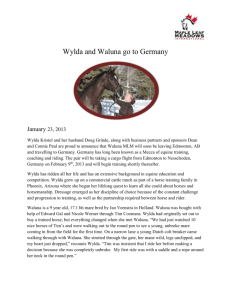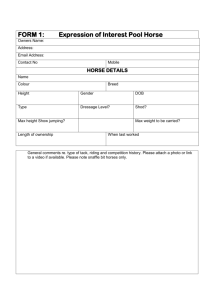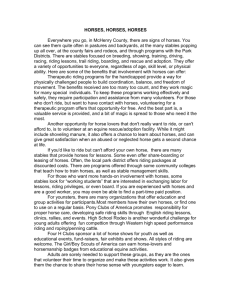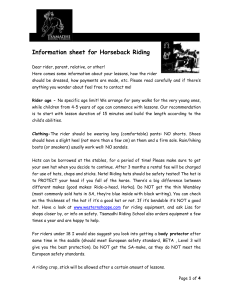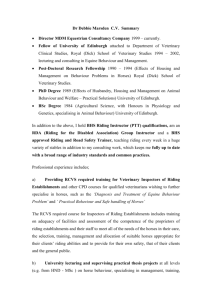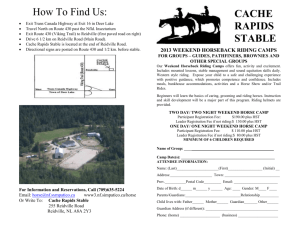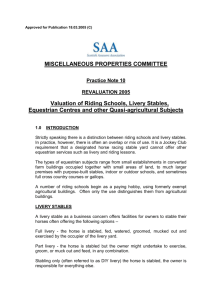Jillian`s biography
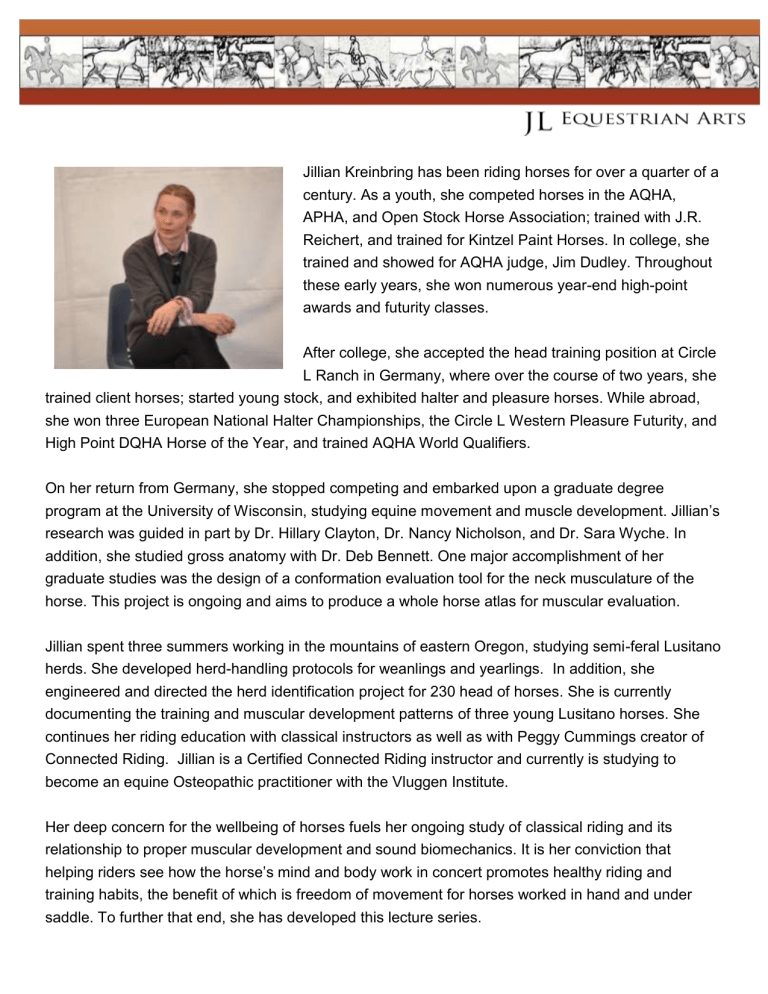
Jillian Kreinbring has been riding horses for over a quarter of a century. As a youth, she competed horses in the AQHA,
APHA, and Open Stock Horse Association; trained with J.R.
Reichert, and trained for Kintzel Paint Horses. In college, she trained and showed for AQHA judge, Jim Dudley. Throughout these early years, she won numerous year-end high-point awards and futurity classes.
After college, she accepted the head training position at Circle
L Ranch in Germany, where over the course of two years, she trained client horses; started young stock, and exhibited halter and pleasure horses. While abroad, she won three European National Halter Championships, the Circle L Western Pleasure Futurity, and
High Point DQHA Horse of the Year, and trained AQHA World Qualifiers.
On her return from Germany, she stopped competing and embarked upon a graduate degree program at the University of Wisconsin, studying equine m ovement and muscle development. Jillian’s research was guided in part by Dr. Hillary Clayton, Dr. Nancy Nicholson, and Dr. Sara Wyche. In addition, she studied gross anatomy with Dr. Deb Bennett. One major accomplishment of her graduate studies was the design of a conformation evaluation tool for the neck musculature of the horse. This project is ongoing and aims to produce a whole horse atlas for muscular evaluation.
Jillian spent three summers working in the mountains of eastern Oregon, studying semi-feral Lusitano herds. She developed herd-handling protocols for weanlings and yearlings. In addition, she engineered and directed the herd identification project for 230 head of horses. She is currently documenting the training and muscular development patterns of three young Lusitano horses. She continues her riding education with classical instructors as well as with Peggy Cummings creator of
Connected Riding. Jillian is a Certified Connected Riding instructor and currently is studying to become an equine Osteopathic practitioner with the Vluggen Institute.
Her deep concern for the wellbeing of horses fuels her ongoing study of classical riding and its relationship to proper muscular development and sound biomechanics. It is her conviction that helping riders see how the horse’s mind and body work in concert promotes healthy riding and training habits, the benefit of which is freedom of movement for horses worked in hand and under saddle. To further that end, she has developed this lecture series.





